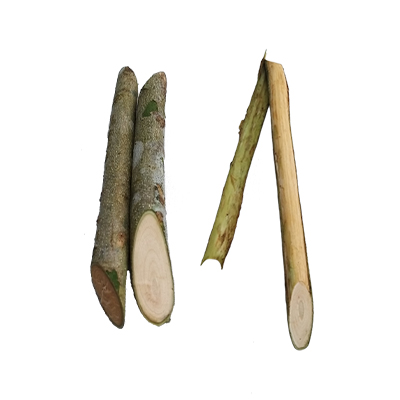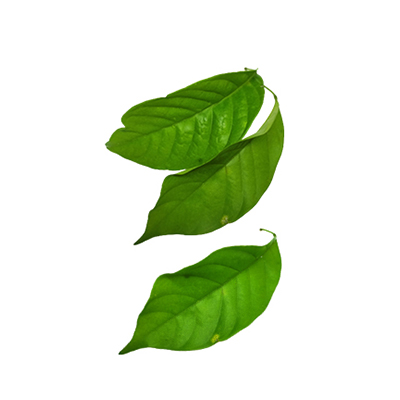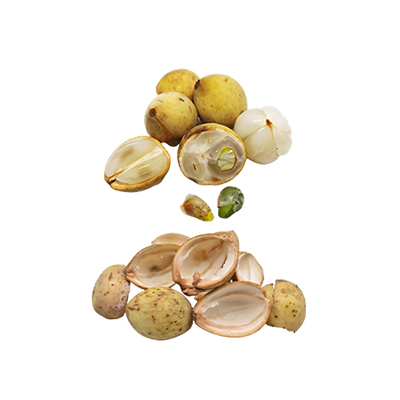Lanzones
Lansium domesticum Corrêa
Meliaceae
Location in our garden
Orchard
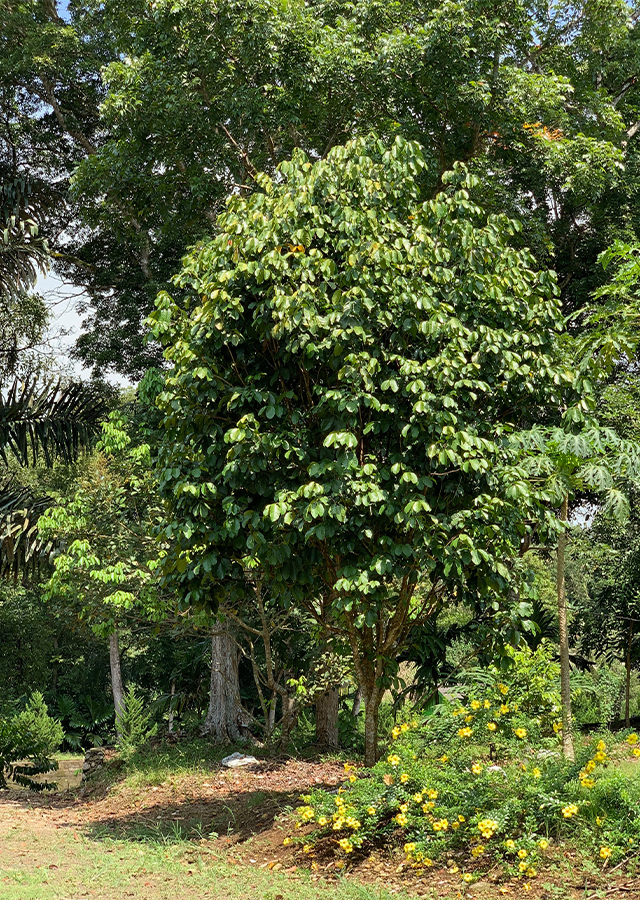
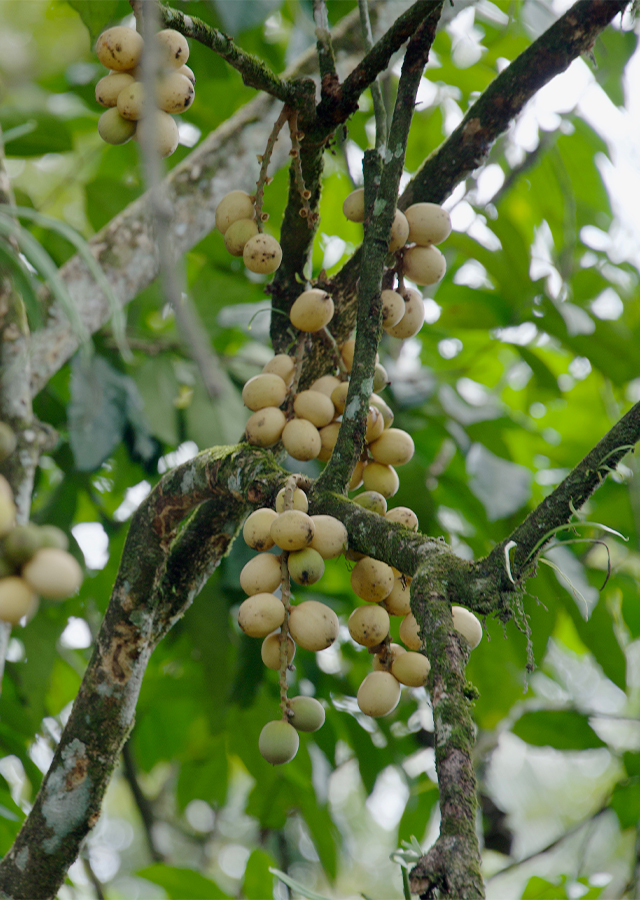
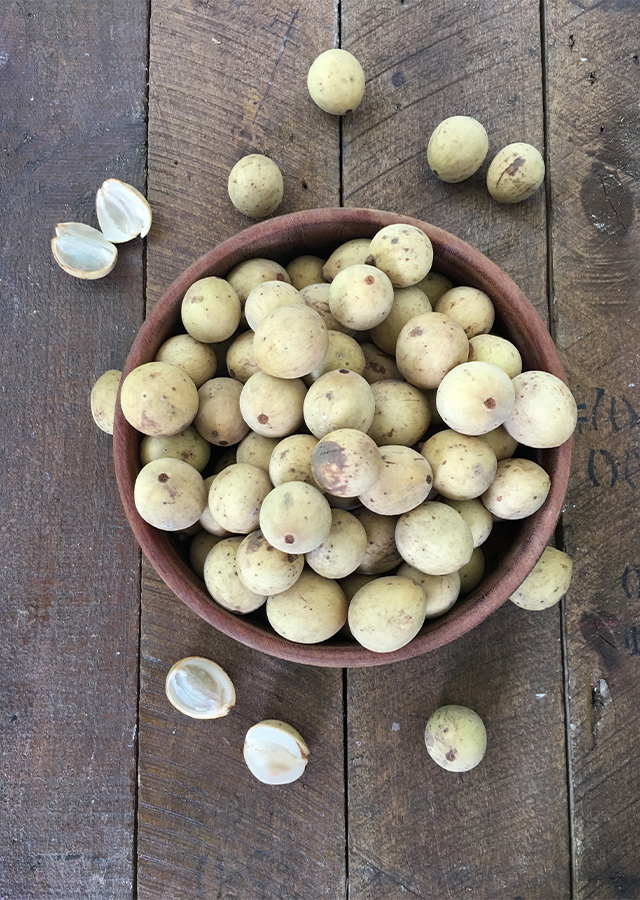
Synonym
Taeniochlaena polyneura G. Schellenb.
Aglaia aquea (Jack) Kosterm.
Aglaia domestica (Corrêa) Pellegr.
Lansium javanicum M.Roem.
Lachanodendron domesticum (Corrêa) Nees
Amoora racemosa Ridl.
Habitus
Trees. An evergreen tree usually growing 10-30 m tall
Part Used
Leaves
Seeds
Bark
Fruit
Growing Requirements
Full Sunshine
Need Shade
High Rainfall
Habitat
Forest
Overview
Lanzones originates in western South-East Asia, from Peninsular Thailand in the west to Borneo in the east. The plant is often cultivated, especially in tropical Asia, where it is considered to be one of the best fruits of the Malay region and it is mainly grown as a backyard or garden tree, commonly sold in local markets.
Vernacular Names
Lan sa (Chinese), Sød duku (Danish), Doekoe (Dutch), Duku doux à large fruit (French), Süßer duku (German), Longkong (India), Ceroring (Malaysia), Lansones (Philippines), Langsat waan (Thai), Bònbon (Vietnamese), Dukuh (Indonesia)
Agroecology
L. domesticum is grown mainly in mixed stands with companion trees which provide shade. Only thrives in sheltered, humid environments up to 800 m elevation, but preferably near sea-level. It requires a warm, moist, well distributed rainfall (or access to ground water, or irrigation), shade and mulch. It dislikes sandy coastal soils and alkaline soils. Medium-textured soils rich in organic matter and slightly acid are preferred.
Morphology
- Leaves - alternate, 20-40 cm long, with 5-7 leaflets, oblong to oblong-elliptic, 7-18 cm in length, and pointed at both ends.
- Flowers - small, bisexual, yellow and borne on spikes, solitary or fascicled on the trunk or larger branches.
- Fruits - yellowish-white, occurring in bunches on a single stem, ellipsoid or globose, 2-4 cm long, with bitter seeds that are surrounded by a translucent pulp (arillus). The outer skin is thin and tough, abundant in a milky juice. Pulp occurs in five sections with one well-developed seed.
- Seeds - 1-3, enveloped by a closely adhering, thick, fleshy, translucent white aril, cells without developed seed are also filled with aril tissue.
Cultivation
- By seeds - must be planted within 1-2 days after removal from the fruit Sow in a shaded position in a nursery seedbed.
- By cuttings - using green wood, but requires much care.
- By grafting - the methods ranging from patch budding and side veneer grafting to cleft grafting and suckle grafting, a form of inarching.
Chemical Constituents
Lansium acid, volatile oil, oleoresin, resin, tannin, alkaloid, sucrose, saccharose, fructose, glucose, tetranortriterpenoid, limonoids, triterpenoid lansiolides.
Traditional Medicinal Uses
- Studies have shown anti-malarial, antioxidant, antimelanogenesis, antibacterial, anticancer, and repellent properties.
- The bark is considered antipyretic, anthelmintic, and astringent.
- The peel is used for diarrhea and intestinal spasms.
- In East Kalimantan, Indonesia, decoction of bark used for malaria. Powdered bark used for scorpion stings. Bark resin used for flatulence and gastrointestinal colic, for swellings, and as antispasmodic. Tincture prepared from the dried rind used for diarrhea and abdominal colic.
- Crushed seeds used for fevers. In Java, Indonesia, seeds are used as vermifuge and antipyretic.
- The leaf juice is used as eye-drops to dispel inflammation.
Part Used
Reference Sources
- Yaacob, Othman & Bamroongrugsa, Noparat. (2016). Pl@nt Use. Lansium domesticum (PROSEA). https://uses.plantnet-project.org/en/Lansium_domesticum_(PROSEA). 11-02-2021.
- Stuart Exchange. (2014). Philippines Medicinal Plants. Lansones. http://www.stuartxchange.com/Lansones.html. 11-02-2021.
- Fern, Ken. (2019). Useful Tropical Plants. Lansium domesticum Corrêa. http://tropical.theferns.info/viewtropical.php?id=Lansium+domesticum. 11-02-2021.
- POWO (2021). Plants of the World Online. Facilitated by the Royal Botanic Gardens, Kew. Published on the Internet; http://www.plantsoftheworldonline.org/Retrieved 01 December 2021.
